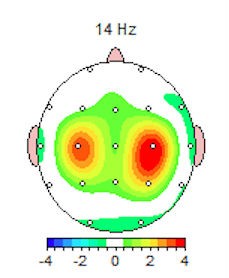
Do you currently suffer from migraines? Are you currently on medication for migraines? Are you concerned about the side effects from your migraine medication?
If you answered “Yes” to any of the questions, neurofeedback training might be right for you.
Neurofeedback training can not only relieve your individual migraine occurrences, but it also could be very effective in reducing the intensity and frequency of your migraines over the long term.
What is Neurofeedback Training?
Neurofeedback Training is a simple, painless, drugless and non-invasive therapy. It trains the EEG or brainwaves using operant conditioning. Operant conditioning uses auditory and visual feedback to reward the brainwaves when they change in the desired direction to decrease migraine episodes. An individual learns to control his own brainwaves through the help of visual and auditory feedback.
Neurofeedback training is simple, painless, drugless, non-invasive and virtually has no harmful side effects.
How does Neurofeedback work?
Neurofeedback is a way to quantify and train brain activity.
The basic principles of how neurofeedback works are deceptively simple.
Communication between groups of cells in the brain generates thoughts, sensations, actions and emotions. This activity is detectable in the form of brainwaves – electrical impulses generated by your brain activity.
During a neurofeedback session, sensors detect your brainwaves to see your brain in action. A computer compares your brain activity to targets or goals for you to reach. Through operant conditioning, sounds and images tell you immediately when your brain reaches your goal and when not – when you are activating or suppressing the target area of the brain.
Through this simple method, you learn how to quiet brainwaves associated with low performance and increase brainwaves associated with optimal brain function. Much like physical exercises strengthen and develop specific muscles, the more your brain is exercised into reaching a new more comfortable, more efficient position, the better and stronger it gets.
How does Neurofeedback help with Migraines?

2-D QEEG Brainmap for Migraine
When an individual is suffering from recurrent migraines, their Quantitative EEG (QEEG) 2-D and 3-D brain map is usually abnormal. The findings usually indicate excessive high frequency (shown in red). See right. Neurofeedback training is used to normalize the QEEG.
How do we decide what needs to change?
A thorough assessment is done to determine what the difficulties a person is experiencing along with the history of the problem, medical history, family history, and an assessment of brain functioning. A quantitative EEG (QEEG) is performed to collect data under different conditions, eyes closed, eyes open, reading and doing a performance task. We look at the results of the way the brainwaves are working, and we run the results against a normed data base that is the same as the person’s age, gender and handedness. We determine a direction for treatment based on the symptoms of the individual and the quantitative electroencephalogram (QEEG).
How long does it take?
The length of neurofeedback training sessions always depends on the condition, age and health of the patient as well as any other health conditions that are present and need supportive treatment. We find that an average number of sessions to get a significant change to occur are around 20-30 sessions. However, rarely does a case resolve completely in that few sessions. It usually takes around 40 to get the best results. Individuals that have other health concerns need to recognize that Neurofeedback alone cannot do everything and there needs to be a comprehensive understanding and treatment of the overall health problems.
How often can a person do a Neurofeedback session?
A person can get a neurofeedback session as much as twice a day with at least a two-hour break in between. It is recommended that a person try to do neurofeedback at least two or three times a week until the sessions are completed. Results appear to solidify and happen faster when done more frequently. If a person is going off medication it is helpful to do neurofeedback in this way to help with the transition and chemical adjustment in the body. When a person speeds up their treatment they get the results and life changes quicker.
